
an inland empire analysis
Part
1
WARNINGS
APPROACHING THE FILM
HISTORIES
THE BASICS
IMPORTANT FACES
Part
2
MURDER
AN UNPAID BILL
PURGATORY
Part
3
THE CONNECTION
DREAM ORIGIN
IT TAKES A VILLAGE
ENLIGHTENMENT
Part
4
RABBITS
AXXON N
RED, BLUE, GREEN
AFTER MIDNIGHT
UNSOLVED MYSTERIES
MORAL OF THE STORY
Reference
LYRICS
DELETED SCENES
Discuss
AT XIXAX.COM
Part 3
The Connection
It's difficult to miss the spiritual content in INLAND EMPIRE. Even those who might have a radically different interpretation than my own will acknowledge the existence of many scenes which must take place in some kind of afterlife. When you have dead characters meeting each other, it's pretty obvious that you're dealing with something supernatural. With David Lynch's interest in transcendental meditation and New Age spirituality being so well-known, this becomes an even more natural course of interpretation.
If you agree that INLAND EMPIRE deals with death and spirituality in general, you must acknowledge that certain characters have connections with each other that appear to extend beyond the mortal coil. Before I get into the details, let's revisit the now-infamous "old tale" as told by Visitor #1.
A little boy went out to play. When he opened his door, he saw the world. As he passed through the doorway, a ghost—a reflection—evil—was born. Evil was born and followed the boy . . . And, the variation. A little girl went out to play. Lost in the marketplace as if half-born. Then, not through the marketplace—you see that, don't you?—but through the alley behind the marketplace. This is the way to the palace. But... it isn't something you remember.
First, we need to define "a little girl." There is only a handful of important female characters, and I'm going with Sue, because Sue is definitely in "the alley behind the marketplace" in one memorable scene. [33] This girl (who indeed is most certainly Sue) also happens to be "half-born." Hmm. That's problematic, isn't it? Let's examine this phrase, because it really does stand out, it's very much on-topic, and it can't be ignored.
"Half-born" can only mean a limited number of things. Actually, it can only mean one thing—that Sue was half-born. I suppose you could say something convoluted, like it's a kind of metaphor for the Sue/Nikki relationship, but that doesn't really stand up. Let's stick with conclusions that are corroborated by evidence in the film, like this one—Sue really was half-born. Well, then, what does that mean?
When we say that Sue is half-born, we're saying there's another half that was not born. We can reasonably assume that this other half, having not been born, is "on the other side," as the "Polish Poem" theme song tells us. Wait, whose theme song is that? That song belongs to Lost Girl, who is in fact the unborn half who watches the born half through her purgatory television. When we see Sue actually merge into Lost Girl in that climactic scene, [34] it's clear that the two have a pretty significant spiritual connection. But what is the nature of this connection, exactly? If they are two halves, what does that mean? We now arrive at the concept of soulmates.
Let's jump right into it, then. This is a brief excerpt from God, Creation, and Tools for Life, a book by Sylvia Browne—world-famous psychic, "spiritual teacher," and all-around New Age behemoth.
People in physical life constantly look for their soulmate; they become despondent if they realize that they are not with that entity. The Earth planet, unlike others, is not conducive to both souls coming down. The reason for this is that if one part of the twin soul is scarred too badly, the other part is also scarred. That doesn't help anyone, so the soulmate usually stays on the Other Side to guard, love, and guide the person, and be a partner to the spirit guide. (108-109)
Lost Girl fills this role perfectly. Browne goes on to describe an "empathy bond" between soulmates. Lost Girl, being rather tearful as she watches her soulmate's life and death, probably qualifies in the empathy and love categories. She "guards" Sue by creating or co-creating the comfort-blanket Nikki Grace fantasy (which reimagines Sue's life as that of a happy, successful actress). She even fits Sylvia Browne's last two criteria—guiding and being in partnership with the spirit guide. The scene where Lost Girl gives Sue instructions on how to burn a hole in the silk and look through it (which reveals illuminating scenes from Lost Girl's life) suggests that she plays a significant guiding role, whether or not it's entirely conscious.
There are many other examples of subtle interaction between the two halves of this "twin soul," but one is especially explicit. It happens in a rather magical moment late in the film, when Sue (in spirit form) looks directly through the TV at Lost Girl. [35-37] This quite nakedly exposes their connection. In fact, if you watch the making-of documentary, Lynch 2, you'll see David Lynch instruct Laura Dern to play that moment as if she recognizes herself. Here's a brief transcript of that moment:
Lynch: And then you turn and look right into the camera.
[Lynch, aware of the documentary camera's presence, coyly whispers something totally inaudible in Laura Dern's ear.] [38]
Lynch: [now in a medium whisper] She'll see you looking at her from the TV.
Dern: Okay. Okay.
Lynch: You know, like that. You're lookin' right at the camera.
Dern: [turning her face away, speaking in an audible half-whisper] And I'm looking at the camera as though I see myself?
Lynch: You see your—yeah, yeah.
This is a pretty remarkable moment of exposition for Lynch. If you had any doubt about this connection, that should take care of it. (I just wish we could hear everything they whispered.)
Back to Lost Girl now. If she's not only guiding but is also "in partnership" with a spirit guide, who is this spirit guide? Well, make that plural, because we're talking about the prostitutes. They drop Sue a great number of hints and keep her company during some difficult times. Sometimes they even speak as a collective, as if they're communicating on Sue's behalf. [39] Most crucially, though, they are the connection between Sue and Lost Girl. Every time Sue is shown something of Lost Girl's world—old Poland, for example—the prostitutes are directly involved. [40] They are tour guides, [41] essentially, who are very much interested in getting Sue to the other side. [42] Notice how they run blissfully through the hallway when Sue's arrival is imminent. [43]
The connection is clear. But what is the purpose? I've already argued that the purpose of purgatory is to pay the debt and defeat one's own evil, but I have not covered how that applies to the soulmate connection. After all, what does defeating "one's own" evil mean if "one" is actually two people? The crucial point here is that, since they are essentially a paired spiritual being, Lost Girl and Sue share this evil which must be purged. They also share the debt. In effect, since it is her turn to put her boots on the ground and incarnate, Sue inherits Lost Girl's debt. You could say that Lost Girl is reincarnated as Sue.
Remember the stunning parallels between Old Poland characters and contemporary Inland Empire characters? The faces of characters are repeated, but that's not all. As we discussed earlier, each role is also repeated. The abused, unfaithful wife. The tragic lover. The infertile spouse. The cheated spouse. The funny thing is that the faces are the same, but the roles are very much switched around. It's quite possible, in fact, that we can extend the Lost Girl/Sue reincarnation to some of the other characters—to Smithy and Doris Side at the very least. Yes, I'm suggesting an ensemble reincarnation. It's as if the characters from the massively tragic Old Poland drama are made to experience the same story again, but this time—in Inland Empire—from different points of view. There would be obvious spiritual reasons for this—expansion of experience, development of empathy, perfection of the soul, and good-old-fashioned karma. The details of their spiritual struggles are not explicitly covered in the film (three hours is only enough time for Sue and Lost Girl, really), but we can assume the same kind of dynamic. I've been slightly skeptical of this multiple reincarnation theory since the moment it occurred to me, but it persists, it swallows up any other theory I can apply to the situation, and it is not contradicted in the film. There really is no better explanation.
Let's review. Lost Girl lives a tragic life, makes some pretty horrible mistakes, and ends up dead in purgatory. She watches and acts in a guiding capacity [44] as her soulmate (Sue) lives out a very similar existence, dies, struggles badly to return, and then finally does, destroying their shared inner-evil. The unpaid bill has been paid. They accomplish this—albeit in a certain involuntary manner—as a kind of spiritual team.
Before we describe the success of their effort, let's take a step back and examine the process. How is this purging and repaying actually represented in the film? How, scene-by-scene, is it accomplished?

[33] In the alley behind the marketplace.
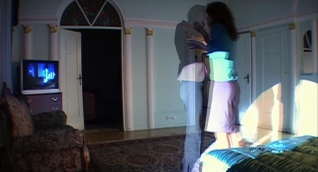
[34] Sue and Lost Girl merge.

[35]

[36]
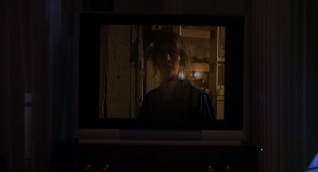
[37]

[38] Lynch whispers instructions.
(behind the scenes)

[39] The prostitutes speaking collectively
for Sue.

[40] Literally opening the window to Old Poland.

[41] "This is the street."

[42] Guiding Sue from the background.

[43] Excited for the reunion.

[44] Lost Girl instructs Sue.
Dream Origin
"This isn't the way it was."
- Jane Rabbit
Midway through the film, the prostitutes drop this bombshell on Sue, each one delivering a piece of it:
In the future... you will be dreaming... in a kind of sleep... When you open your eyes... someone familiar will be there. (This "someone familiar," of course, is Lost Girl.)
If Sue is "dreaming in a kind of sleep," what is the dream? In short, "the dream" is pretty much everything that Sue experiences in this movie. It can be divided into three parts:
• THE FANTASY - The Nikki Grace fantasy.
• RELIVING - Sue, in spirit form, relives parts of her life.
• ACTUAL LIVING - Moments that actually happened as we see them.
How do we distinguish between the three? The Nikki Grace fantasy should be fairly easy to notice by now. However, the difference between the reliving scenes and the actual living scenes is much more subtle. It's best to assume that most of what we see is reliving.
Let's define the reliving with a little more precision. Basically, it's a free-form post-life journey of reflective discovery. Sue recalls scenes from her life, and she is able to bring herself back into these scenes to watch or participate. She interacts with the various characters, but she is often subordinated to the position of a spectator when something interesting is happening. (The barbecue scene is a good example of this.) [45] Sue is taking an extended, embellished, and frequently guided tour of her own life. We should also remember that Lost Girl generously inserts clips from her life for comparison. This is a collaboration, after all.
We should also acknowledge the successful effect of the reliving, which is that Sue's experiences illuminate Lost Girl's past life for Lost Girl (who is observing), while Lost Girl's experiences (which Sue sees with Lost Girl's explicit guidance) illuminate Sue's current (or recently ended) life for Sue. It is entirely symbiotic.
The origin of this reliving is another question. Based on everything we know, we can say that Sue is either dying or very much dead when she starts the reliving. This is actually a crucial distinction. Some people believe that as Sue is dying on the walk of fame, that her life "flashes before her eyes," as they say. That's possible. But I'm more inclined to believe that Sue is already dead when the reliving begins. There's just more evidence for it.
There is, in fact, a ton of evidence that Sue has been dead for a while, wandering the world as a confused and reflective ghost. We know incontrovertibly that she is in this classic limbo state after the Hollywood & Vine scene. The question is whether she is dead even before that. I am inclined to believe she is. Exhibit A is Sue's constant chronological confusion.
During the blue-lit under-the-covers lovemaking scene, Sue (on the verge of self-realization) talks to Billy (who is not Devon anymore). She says this: [46]
This thing that happened. It's a story that happened yesterday, but I know it's tomorrow.
Much later in the film, Sue reiterates her chronological confusion to Mr. K: [47]
The thing is, I don't know what was before or after. I don't know what happened first, and it's kind of laid a mind fuck on me.
Sue clearly thinks she is still living. While she acknowledges that her reality has become twisted and that something is definitely wrong, she does not understand it and does not yet question her livingness. The extent and duration of her confusion is crucial, because it suggests that something larger than a literal dream is enveloping her existence. I have a hard time believing that her vast journey is all taking place within in a pre-death "life flashing before her eyes" moment. It's an interesting idea, but it doesn't add up, and it also doesn't feel right. I'm convinced that the entirety of the reliving takes place after Sue has died, when she is stuck in this state of limbo between incarnate life and the spirit world.
Did I mention that there's a smoking gun to support my position? Just one catch—it's in the deleted scenes, so it should not be unconditionally accepted. However, we should also consider that these deleted scenes have been collectively named "More Things That Happened," not "Things That May or May Not Have Happened." With all that in mind, here it is. Sue delivers this bit of exposition to Mr. K in her much-extended monologue:
You gotta understand, I was 41 years old in 1960. I'm freaked out about it, cause I lost a bunch of years.
Yeah. Wrap your mind around that one. If we accept what Sue says, this means that she probably died in 1960 (a year which is definitely reflected by interior decoration and furniture in Smithy's house). [48] If you accept the date on the On High In Blue Tomorrows script as "today," this means that she is still in her state of limbo in 2005—forty-five years later. Ouch. [49]
Of course, one could say that since the Nikki Grace world set in 2005 is pure fantasy, it doesn't necessarily mean anything. It just means that Sue (with Lost Girl) could imagine the year 2005. Nevertheless, it's very likely that Sue was dead, confused, and earth-bound for quite a while. It's only when she plays out the death scene on Hollywood & Vine that she realizes she is actually dead. (We'll get to that later.)
Another question lingers. We know that Sue's reliving constitutes the bulk of of the film, but's difficult to say exactly how the guiding fits into that reliving. We know that Sue was guided through life, but how does that apply to the scenes which are definitely not being originally lived? Most likely, we're seeing a mix of two things—Sue being guided through her post-death confusion, and Sue having memories of being guided. It gets complicated when in a few scenes we actually see Sue being guided through memories of being guided. Surprisingly, this brings things into perspective, reminding us that the "dream" is very much multi-layered, and that this network of guiding is actually significantly larger than one might initially believe.

[45] Sue in a clear episode of reliving. Also
see [42].

[46]
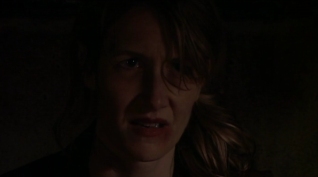
[47]

[48] The vintage interior of Smithy's house.

[49] The script is dated "APRIL 06 2005."
It Takes a Village
We've established that Sue, in her living and reliving, is guided by Lost Girl and the prostitutes. But indeed, as I've suggested, it certainly does not end there. Believe it or not, this list of spirit world figures can be vastly expanded.
Take the Phantom, for example. Yes, the Phantom. I'm not convinced that he's a nefarious figure. I have argued in this analysis that he is more a force of nature than anything else—an evil-reflecting mirror of sorts. I've also established that he's an entirely supernatural figure, inhabiting the spirit world almost exclusively, from what we can tell. I will now argue that he has an entirely progressive effect on Sue's post-life journey of reliving.
To understand the actual extent of the Phantom's supernatural effects, you must first understand the light bulb. You may have noticed the "LB" clearly written on the back of Sue's hand when she pulls the Phantom-killing pistol from Smithy's drawer. [50] It's fairly clear that "LB" means "light bulb." In fact, this is probably the least controversial topic in INLAND EMPIRE interpretation. This widespread certainty is a result of the dramatic prominence of the light bulb in the film. What light bulb am I talking about?
I'm talking about the red light bulb that appears in two different places—in Sue's lamp, [51] and later in the Phantom's mouth as he ominously emerges from behind a tree. [52, 53] I don't have to tell you that the Phantom is probably the owner of this light bulb, and that he probably put it in Sue's lamp.
If this light bulb is so important, what effect does it actually have? This, in fact, is not a great mystery. Lynch basically describes the effect through simple sequencing. At one crucial moment, the lamp (with the red light bulb installed, of course) flashes violently at Sue. What follows is extremely important:
1. We see some fleeting images of Billy.
2. The prostitutes are spawned.
3. They take Sue to Poland.
4. Lost Girl shows Sue how to look through the silk.
Yes, that's a lot. The light bulb connects Sue directly with the spirit world. It opens that door for her. People sometimes say that you need a stimulus—belief, meditation, or even psychedelic drugs—to actually connect with God, spirits, spirituality, and the like. The light bulb is Sue's stimulus. It may seem evil, especially in connection with the Phantom, but its practical effects suggest that it actually brings Sue to a higher level of consciousness. We see no negative effects from the light bulb, but we do see plenty of positive ones. The light bulb establishes the very first clear line of communication between Sue and the prostitutes, Lost Girl, and Lost Girl's past life (a version of which Sue is living/reliving, after all). This is extraordinarily meaningful. The Phantom, in his capacity as keeper and installer of the red light bulb, makes all of that possible.
We can also talk about the Phantom's role as guardian of the purgatory. [54] Clearly, the purgatory is a natural and necessary part of the spirit world. Lost Girl may have a challenging viewing experience while in the purgatory, [55] but it's all in the name of spiritual progress, which does eventually come. It's not as if the Phantom is lashing her with some demonic instrument or burning her in some kind of hellfire. This is a cleansing. It's tempting to label the Phantom as the film's villain, but I don't think he deserves it, for all the reasons we've discussed, including the crucial point (which I cannot repeat enough) that he's only a reflector of evil.
And now, because so much spiritual meaning originates there, we must cover the seance. [56] This is the scene at the candle-lit table where Lost Girl's spirit is channeled and sends for Smithy. [57] Since this moment connects a contemporary figure (Smithy) with an Old Poland figure (Lost Girl), it must be explained. This is my theory. The contemporary Smithy is born in New Poland and lives in New Poland for quite a while working with the circus. In the mean time, it's quite possible that he becomes aware of the injustices in his past life. When he is brought to the seance, he comes to understand that his past life lover (Lost Girl) has been imprisoned, that "the man he works for" (the Phantom) is somehow involved, and that he can be found in Inland Empire. Smithy goes to Inland Empire and moves nextdoor to the Phantom. He can't, however, confront the Phantom—probably because he knows what he'd be facing. Smithy's cowardice and his unsatisfiable desire for vengeance turns him into a bitter, angry, abusive man.
That's how Smithy fits into the seance. But who are all the other figures in the room? Most prominent are the three old Polish men conducting the seance and channeling Lost Girl's tortured spirit. These mediums are probably actually living, but they are still obviously connected with the spirit world in a very direct way. They obviously enjoy saying cryptic things, like "it was red" (referring either to the light bulb or the Old Poland murders) and "the horse was taken to the well" (which we'll cover in detail later).
Straightforward enough, isn't it? But wait. There's another man in the room. See that guy standing next to Smithy? His name is Janek. Ah, yes, Janek—the spirit world figure that no one seems to notice. When we examine what he actually does, you might be surprised by his importance.
First, let's establish that Smithy did not come to the seance of his own volition. One of the mediums actually spells this out for us. ("You understand she sent for you?" he says.) Smithy did not seek this out. How did he get there, then?
Well, notice how Smithy enters the room. Janek is pulling him in by his sleeve. [58] This is the kind of thing that should stand out. Notice how forceful Janek is during the rest of the scene, too. He encourages Smithy to see Lost Girl and escorts him out (still holding his sleeve) when they need to leave. So if the spirit of Lost Girl (from her purgatory, we assume) "sent for" Smithy, and Janek brings Smithy into the seance, we can reasonably conclude that Janek went out and fetched Smithy. Janek also brings Smithy to see the man in the tin shack, sitting with Smithy in the back of the car [59] and standing by during the conversation. [60] That backwoods meeting leads Smithy to Inland Empire.
Let's take score, then. Janek finds Smithy, brings him to the seance, encourages spiritual connection, helps him take the Phantom-killing gun, rushes him out, brings him to a crucial meeting, and ultimately leads him to Inland Empire. So yes. Janek is a crucial figure. The only question is whether he is of the human world or the spirit world.
In his cooperation with the mediums, Janek is clearly connected with the spirit world. But how far does it go? To answer this, we need to acknowledge that Janek actually appears in two different times. We see him in New Poland as described above, but we also see him in Old Poland with what is clearly the Old Poland version of the Phantom. In this scene, Janek sits serene and majestic as if on a throne. [61] In their cryptic conversation, the Phantom appears to be pleading a case to him. Janek is clearly the authority.
So what is Janek? A deity of some kind? God, even? We don't really know. Maybe he is also reincarnated (notice the difference in clothes and demeanor). Perhaps he holds a trans-life grudge against the Phantom and wants to see him pursued by Smithy. In the end, Janek's role is unclear, because there are many viable possibilities.
And now, another crucial character who can be easily mistaken as superfluous—the lovable Mr. K. It's tempting to assume he's simply a device. In fact, on the surface he appears to behave like one, providing an almost-too-convenient venue for Sue's extensive character exposition, saying and doing almost nothing. The thing is, he actually does a lot.
Mr. K's most obvious role is that of a counselor. [62] He listens but more crucially is an initiator of introspection. This helps Sue get an early start on the purging process. [63] As she talks, she discovers things about herself and works out some of her confusion. She starts furiously digging up nasty bits from her past. This is exposition in two senses. These pieces of darkness are exposed to us (the audience) as traditional character exposition, but they are also exposed within the film to the light of day, where they are vulnerable to defeat.
Remember what Sue says when she arrives in Mr. K's room? "I was told you can help me." He is not simply a device.
There's also clear evidence that Mr. K is connected with the New Poland mediums. The following is the phone conversation he has as Sue gets nervous and leaves. [64] Notice that he repeats both cryptic lines from the seance scene:
Hello? Yeah. Still here. I don't think it will be too much longer now. Yeah. The horse to the well. Yeah. Hmm? Yeah. He's around here someplace. That's for sure. [In Polish] It was red.
When he says "still here," he's obviously talking about Sue. So this telephone conversation is probably about her. When he says he doesn't think it will be too much longer, he's most likely talking about Sue's forthcoming confrontation with the Phantom. When he says "he's around here someplace," he's talking about—you guessed it—the Phantom.
And finally, what does this "horse to the well" phrase mean? Its meaning soon becomes clear, actually, because Mr. K does in fact lead the horse to the well when he leads Sue to the Phantom. Notice in this scene how he cleverly leads Sue up the blue staircase, [65] which, after all, is definitely a path to Room 47.
In addition to the horse-leading thing and the introspection triggering, there's a bit of evidence that Mr. K is an accountant—presumably the secretary of spiritual debt. When he is introduced, we see him examining a worn piece of paper. [66]It is also suggestive that he occupies an office, since he's the only character in the film found in such a setting.
As if all that weren't enough, there's one more thing. Remember that we see Mr. K coming down from the projection room in a movie theater. (That may also be his office, if it is connected to the club.) Also recall that Sue watches this movie screen as a highly-informative flash-forward shows her precisely where the phantom-killing gun is hidden. [67] Mr. K as clue-planting projectionist? Could be.
Let's wrap this up with a review of the major spirit world figures:
Lost Girl
the prostitutes
the visitors
the Phantom
the mediums
Janek
Mr. K
That's quite a cast of guides for someone who thinks she's alone.

[50] LB = Light Bulb.

[51] The red light bulb in the lamp.

[52] The Phantom approaches.

[53] The red light bulb in his mouth.

[54] The Phantom guards the purgatory.

[55] Lost Girl in the purgatory.

[56]

[57] Smithy at the seance.

[58] Janek drags Smithy into the seance.

[59] Janek travels with Smithy.
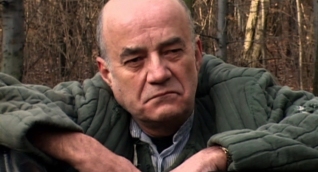
[60] Janek waits by the car.

[61] Janek as a mysterious man of authority.

[62] Mr. K listens to Sue.

[63] Sue, with Mr. K, begins her introspection.

[64] Sue gets (wrongly) suspicious as Mr. K talks on the phone to a spiritual
authority.

[65] Mr. K leads Sue to the Phantom.

[66] Mr. K as spiritual accountant (possibly).

[67] Sue watches herself find the gun.
Enlightenment
After I saw INLAND EMPIRE that first time in the theater, with my brain spinning in my skull, I tried to come up with some kind of rough interpretation. If I was wrong about everything else, I think I was right about one thing—that INLAND EMPIRE is about moving through worlds toward enlightenment.
This "moving through worlds" becomes immediately obvious when Sue plays out that death scene on the walk of fame. It is this roleplaying [68] which brings her to the realization that she is and has been dead—and that she must move on.
When the camera moves in like Jaws, the only person confused by the reemergence of the Nikki Grace fantasy is the viewer. Watch Sue's face carefully throughout that scene—she does not bear an expression of confusion or panic even once. [69] We assume naively that we have established an unbreakable empathy with Sue—that her reactions are ours, and our reactions are hers—but this is simply not true. She's perhaps a bit overwhelmed by the weight of her "I'm dead" epiphany, somewhat annoyed by Kingsley [70] and the hair and makeup people who swarm around her, and just a little anxious to see where her post-life existence is leading her... but confused? No.
Seeing her soulmate through the TV—in that profound scene that I described earlier—brings Sue significantly closer to the truth. Immediately afterward, she enters the movie theater and discovers in a highly symbolic fashion that she is being watched—that she always has been watched—that she has an audience. Getting closer. Sue is then led by Mr. K to the blue stairway, which leads to a seemingly endless network of dark hallways. [71] This part of the film is dripping with symbolism. It's Lynch's version of the "light at the end of the tunnel" motif. There's a vast darkness frequently flooded with bright green lights, bright blue lights, and bright red lights. The "tunnel" is a long network of endlessly twisting hallways. It's as if Sue is moving through an architectural and optical representation of her own battered soul. This is where the aforementioned introspection kicks into high gear, but on an entirely symbolic level.
Sue finally has that climactic confrontation with the Phantom (and her own inner evil), then finding herself at Room 47. (Remember, by the way, that the Nikki Grace fantasy taught her that this is a significant number, which she visibly recalls.) What happens next could not be more clear. Having defeated her own inner evil, and—through the living and reliving of her life—having given Lost Girl the opportunity to defeat her inner evil, Sue spiritually merges with Lost Girl, [34] and they have both achieved enlightenment.
What follows in the film is a fascinating representation of the character of this spiritual pair. While they have just merged, they are once again separate. Lost Girl, having been freed, is reunited with her long-lost lover from another life and a boy who appears in the credits as "Smithy's son."
Let's trust Lynch on this one and assume he is indeed Smithy's son. Since the contemporary Smithy cannot father children, I'm going to say this is Lost Girl's son (possibly unborn at the time of her death) with the Smithy from Old Poland, who was indeed fertile (and whose wife was not).
Sue, interestingly, remains in the purgatory for a moment as she watches a dancer on the television, which appears to represent Lost Girl's freedom. [73] This inspires an intense happiness in Sue. I once believed that Sue actually takes Lost Girl's place in the purgatory, but I now believe something else is happening. This is not the purgatory in which Lost Girl was trapped. The shackles have been removed, and it has become more of a gateway. [74] In fact, for Sue, it is a gateway in the literal sense. Because, just then, Sue is sucked into the TV and becomes part of her very own credits sequence, which, perfectly enough, appears to take place in the afterlife. [75]
It's probably fitting to finish by revisiting the "old tale." Here it is, with my translations:
A little boy [Smithy] went out to play. When he opened his door, he saw the world. [Smithy was born and reincarnated.] As he passed through the doorway [reincarnated], a ghost—a reflection—evil [the Phantom]—was born. Evil [the Phantom] was born and followed the boy. [The Phantom followed Smithy to his second life.] . . . And, the variation. A little girl [Sue] went out to play. Lost in the marketplace [living a "lost" life as a ghost] as if half-born. Then, not through the marketplace—you see that, don't you?—but through the alley behind the marketplace. [My interpretation of this is that "the marketplace" is Sue's living and "the alley behind the marketplace" is her reliving.] This is the way to the palace [the spirit world]. But... it isn't something you remember.
And in the end, Sue and Lost Girl both find themselves in "the palace."
NEXT: Part 4

[68] Sue wakes from the roleplay death.

[69] Sue, dead and determined.

[70] Kingsley, rejected.

[71] Sue traverses one of many dark halls.

[34] Sue and Lost Girl merge.

[72] Reunited.
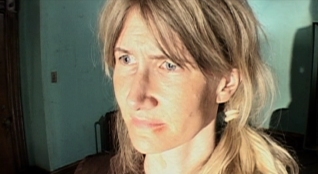 [73]
[73]

[74] Sue, enlightened.
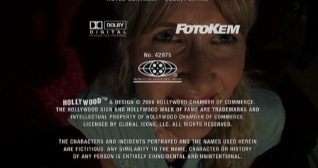
[75]